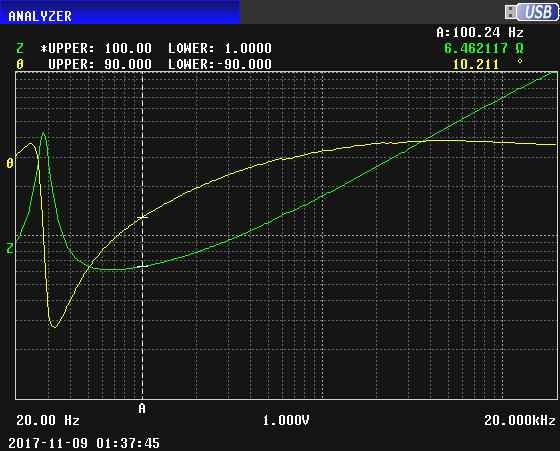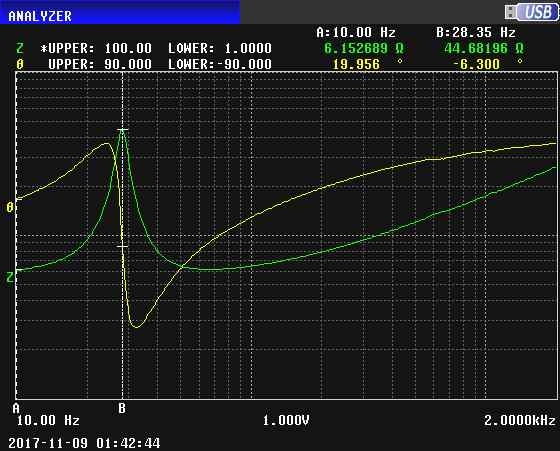Externet
Advanced Member level 2
- Joined
- Jan 29, 2004
- Messages
- 579
- Helped
- 28
- Reputation
- 58
- Reaction score
- 29
- Trophy points
- 1,308
- Location
- Mideast US
- Activity points
- 5,677
Can I do this to measure the impedance of a speaker ? :thinker:
Audio1----------A---------variable resistor---------B----------speaker----------C-----------audio2
Connecting a speaker and a non-inductive variable resistor in series;
Feed 1KHz sinusoidal signal to terminals 1 and 2,
Measuring the voltages AB and BC until they are the same by varying the resistor,
The speaker impedance will be the set resistor value, for the fed frequency.
Repeating at other frequencies to yield a plot.
¿?
Audio1----------A---------variable resistor---------B----------speaker----------C-----------audio2
Connecting a speaker and a non-inductive variable resistor in series;
Feed 1KHz sinusoidal signal to terminals 1 and 2,
Measuring the voltages AB and BC until they are the same by varying the resistor,
The speaker impedance will be the set resistor value, for the fed frequency.
Repeating at other frequencies to yield a plot.
¿?

